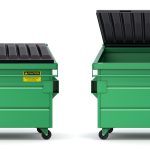Carbon and graphite can be used as two separate materials in many different types of applications. In addition, there are also carbon graphite material options that add the exceptional qualities of both to provide a superior product.
Carbon and Graphite Characteristics
Carbon used in these applications is most often amorphous carbon. This is naturally a very strong material that is also extremely resistant to wear. This same strength and resistance also create problems in some applications as any contract between these carbon materials result in high levels of friction, which decreases efficiency and limits the applications and uses.
Graphite itself is almost the opposite of carbon. It is naturally very soft and very easy to wear down. However, at the same time, the stack-like structure of graphite allows it to easily slip between the layers, which creates a self-lubricating factor for the material.
Carbon-Graphite Characteristics
When combined, the carbon graphite material has the beneficial properties of both materials without all of the potential drawbacks or downsides to use. The combination of the two, which has to be done in correct proportions, will create a durable, strong, long-lasting component that has low friction. Additionally, the corrosion resistance factor is still present and, with both materials very resistant to heat, it can be used in high heat applications such as metallurgy that require long time periods at elevated temperatures.
The processing of manufacturing carbon graphite material requires several steps. This includes combining the two with coal tar pitch, molding the desired products and then baking or sintering the near net shapes for a period of time.
Additionally, during the process, the coal tar pitch is carbonized, which leaves small holes in the product. These holes can be filled with different options in fillers that will help to increase strength and improve thermal conductivity as required in specialized applications.





